Media | Articles
BMW’s First 3 Series (E21) Is Quietly Climbing
By the time my friend Tom got his driver’s license, the odometer on his dad’s 1980 BMW 320i was inching toward 200,000 miles. The Polaris Silver paint had long since lost its sheen, and the interior’s Pacific Blue cloth was worn through in some places and showing threads in others. But boy, was it fun. Bessie, as Tom called the old hand-me-down Bimmer, introduced us to the joys of momentum driving found only in a light, sporty, underpowered platform.
Bessie was a first-generation 3 Series—an E21 in BMW chassis-speak. Outshone by the sporting 2002 before it and the massively popular E30-generation 3 Series that followed, the E21 nevertheless deserves credit for helping take BMW’s sporty identity more mainstream in the U.S. market. Today, it doesn’t get the wide adulation that its siblings do but has nonetheless increased in value steadily over the last several years.
To a couple of teenagers, though, what Bessie and her fellow E21s meant for automotive history was about as exciting as Mrs. Fisher’s algebra exam. This tired 320i mattered to us because it got us out. Off campus, out of Northern Virginia’s suburbs, onto blacktop coursing along the Potomac River, past Round Hill’s apple orchards, and lost in the rolling hills near West Virginia.
Imperfect but endearing, Tom’s BMW navigated our escape roads more precisely than a car this age had any right to. The 101-horsepower, 1.8-liter four (the 320 started with a two-liter four in the U.S. in 1977 but switched to the smaller engine for ’80-’83) took a while to get the car up to speed, but once there, the chassis’ composure made carrying pace a breeze. The 320i had plenty of body roll but almost always hung on. Almost. The semi-trailing arm rear suspension could make the car a little bit of a handful at—and over—the limit, especially in the hands of ham-fisted young adventurers.
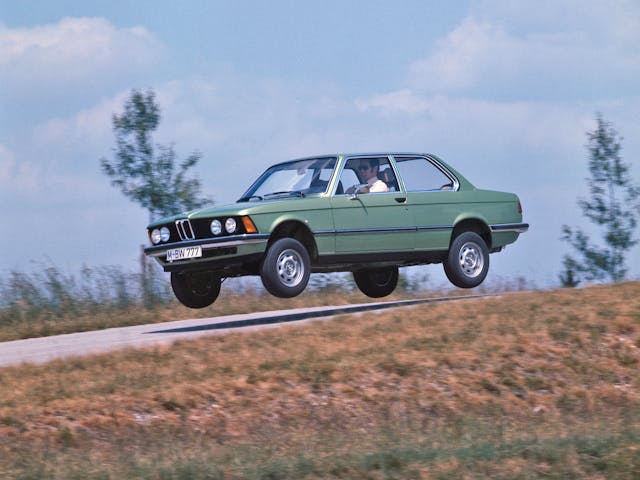
Period road tests lauded the 320’s engaging nature, with Car and Driver’s Rich Ceppos asserting in 1980 that “[t]he 320i is at its best on semi-deserted country two-lane, hammering along just short of its limits. All the controls are direct, linear, and full of feedback. The steering is light and accurate. The brakes are sure.” Ceppos also noted, and I remember, a silky shifter that moved between the five-speed manual’s gears with easy “fingertip flicks.” A willing partner, then, for enthusiastic driving.
Marketplace
Buy and sell classics with confidence
Inside, BMW blessed the diminutive 320 with utilitarian simplicity, using attractive but not luxurious materials atop a clean, driver-focused layout. The gauges and switchgear will be familiar to anyone who has spent time in an E30. Peer around and the cockpit feels small but not cramped, thanks in large part to spindly thin pillars and ample glass all around. If Tom’s car had the available air conditioning, I don’t think we ever used it—the hand-crank sunroof and open windows were plenty in the warm months, and the heater’s perfectly aimed footwell vents kept us toasty when it got cold.
The 320i’s exterior is where the lineage to the 2002 is most clear, though there’s also some visible connection to its larger brother, the 5 Series. It’s not sexy like an Alfa GTV, but there’s a cleanliness to Paul Bracq’s E21 design that speaks to the car’s sporting intent without resorting to gimmickry.
The E21 didn’t sacrifice utility for capability, either. There was plenty of trunk space, and the back seat could accommodate a couple more friends, though not necessarily for longer trips. Fuel economy was pretty good, too, at about 25 mpg on the highway.
As a first car, it more than got the job done—it gave a glimpse of driving pleasure in its simplest form.
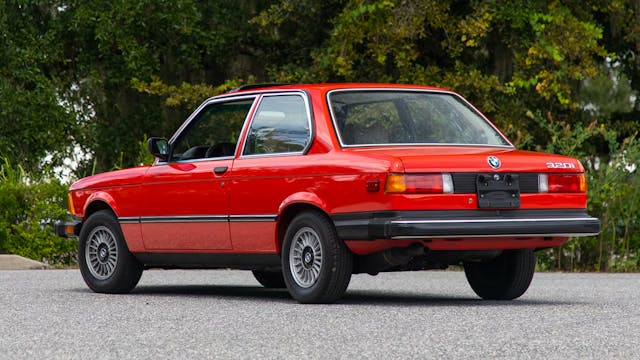
Aside from the other 320i in our high school parking lot, a beautiful Brazil Brown example wearing alloy wheels, we didn’t notice a whole lot of E21s left in our area (and this was in 1996). That’s saying something, since Washington, D.C. and the mid-Atlantic region teemed with these cars on their debut. About 186,000 E21s made it to the U.S. and largely sold to young, affluent buyers attracted to the brand’s recently released Ultimate Driving Machine slogan. While the 320 helped endear BMW to a broader base of buyers than the enthusiast-oriented 2002, as it aged, the E21 never seemed to gain the fervent following that its predecessor enjoyed. The younger E30, which went from cheap and plentiful used car to track car darling to emerging classic, has likewise always seemed to have a leg up on the E21.
Why is the middle child less appreciated? Most critics point to a little too much weight relative to the 2002 and not quite enough power compared to both the 2002 and the E30. Emissions regulations limited BMW’s engine offerings in the U.S., and the E21’s evolution to a slightly softer, more civilized approach compared to the 2002 turned off die-hards.
That said, the 320i has been quietly picking up steam as a collector BMW. Back in 2019, we noted that E21s were on the rise, up 23 percent from the prior year. Maybe we should have picked it for that year’s Bull Market List because since then, #2 (Excellent) condition examples gained 161 percent, to $21,214. Values have come down a bit from the 2022 peak, but the E21 320i has appreciated faster than the 1989-91 325i 2-door sedan (up 87 percent) and the 1968-76 2002 base model (up 103 percent) over the last five years. It is, however, still a lot cheaper than the other two and remains nearly half the value of the 2002.
The in-between syndrome from which the E21 suffers is also evident in our demographic data. The average age for people who seek quotes on them is eight percent younger than the overall market—healthy, but not enough to suggest a continued surge in value. Also, quote volume growth since 2021 has been slow. Compare that to the E30, which has stronger interest among millennials by ten percentage points. The 2002’s demographics aren’t as youthful as the E21, but more people overall are reaching out for quotes.
True, the model doesn’t have the passionate following of the 2002, and BMW didn’t offer a six-cylinder E21 in the States as it did with the E30, but a 320i remains an accessible entry point for those aspiring to classic BMW ownership. Tom’s dad knew what he was doing when he handed his son the keys to Bessie.
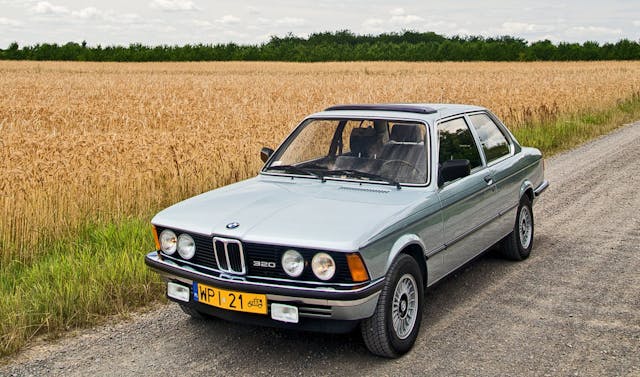
***
Check out the Hagerty Media homepage so you don’t miss a single story, or better yet, bookmark it. To get our best stories delivered right to your inbox, subscribe to our newsletters.
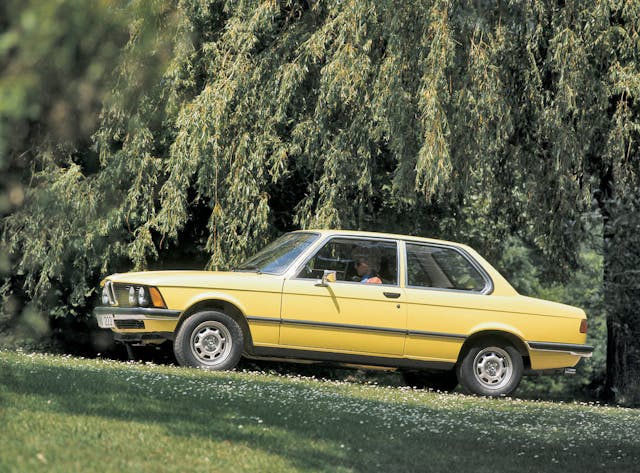
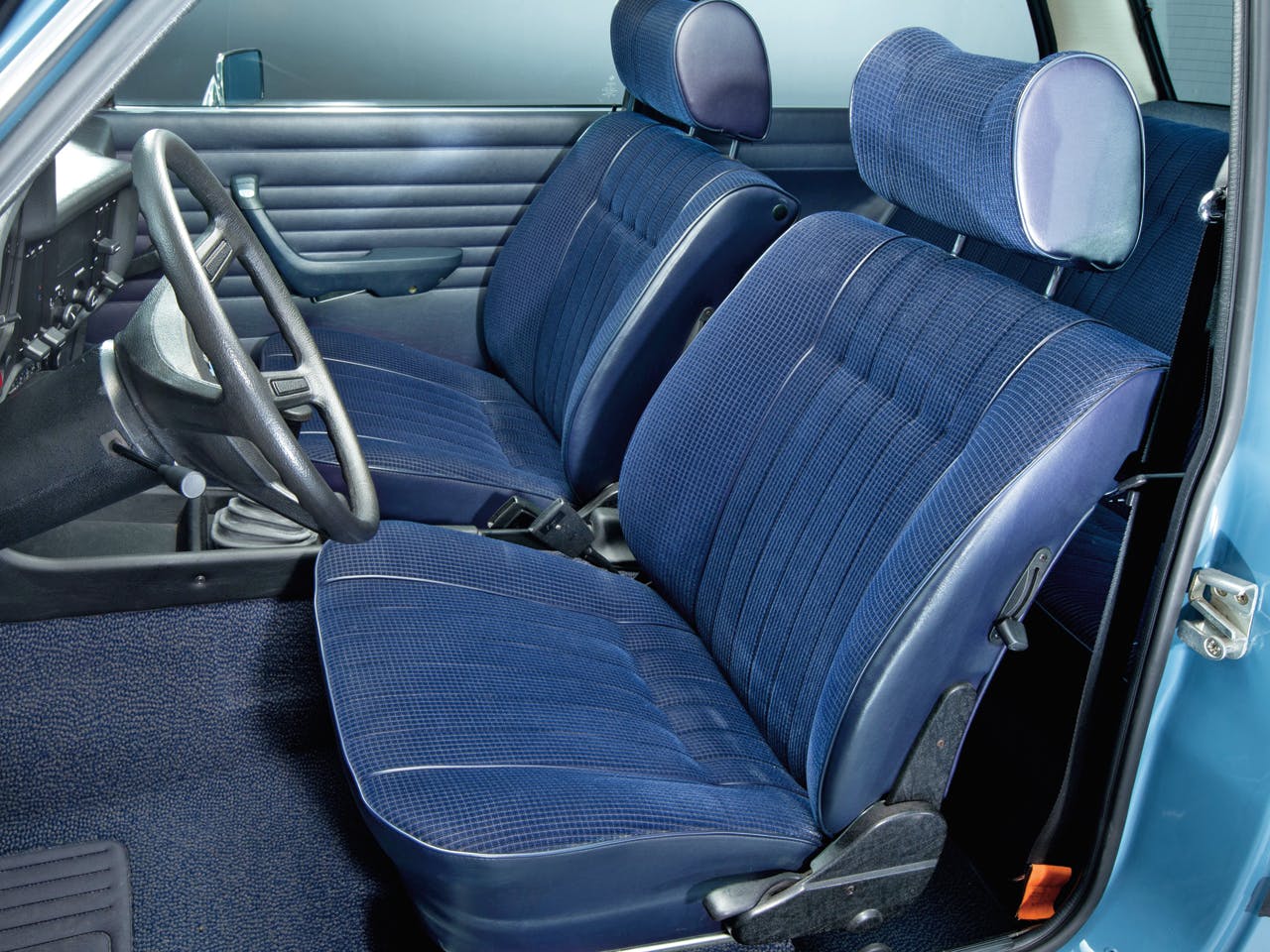
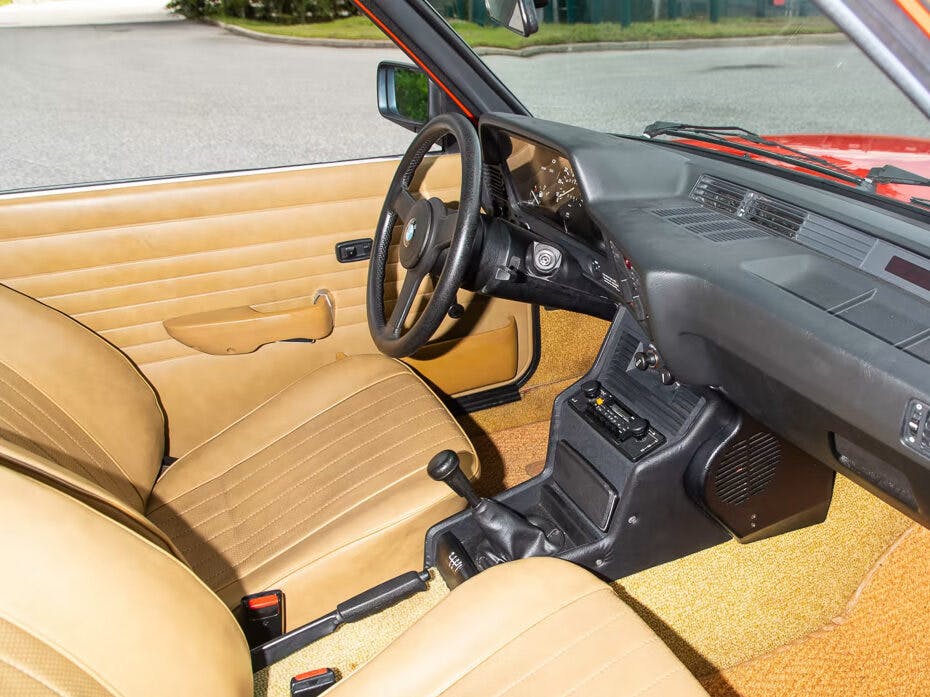




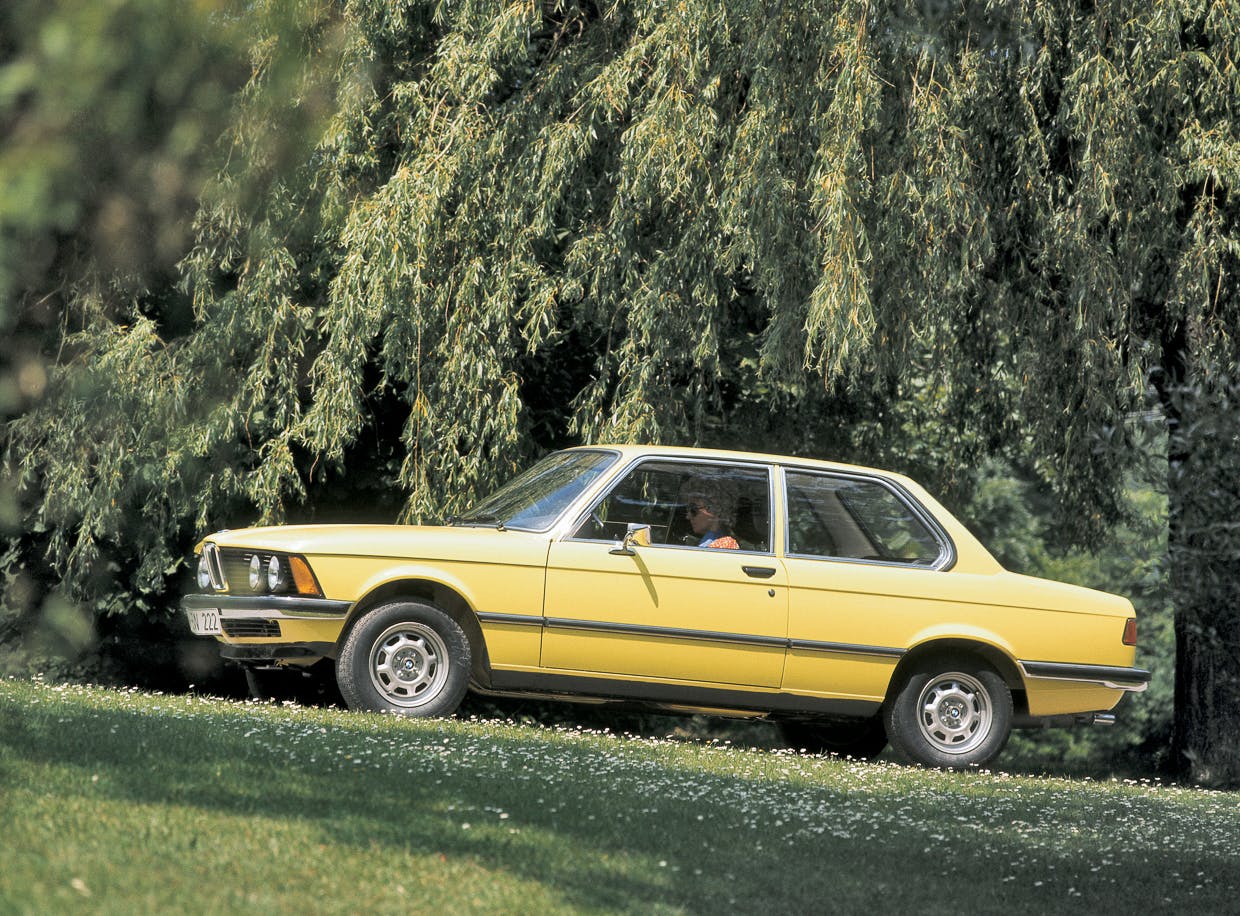
My wife and I owned an ’83 320is for about 18 years. Prior to owning that first 3 series, I was solidly into V8 four speed American cars from the 1960’s. But the E21 changed the way I viewed quick cars. It didn’t have much horsepower, but the engineers who designed the car knew how to get the most performance from what it had. It was perfectly balanced in every way.
I made a few modifications to the Henna Red BMW. I put a Bavarian Sport exhaust header in, Bilstein sport struts with Eibach springs and Bavarian Sport anti-sway bars. The little 320is ran through turns faster than any car that I have owned since. That includes a couple of air cooled Porsches and an E30. The car just handled so damn well that I was constantly driving faster than intended. In that way, I grew to consider it a fast car.
The build quality on the E21 is very high for a late ’70’s to early ’80’s car, but rust is the enemy. These cars must never be allowed to get close to salt covered roads. Also, they are very simple and easy to service and repair, which makes them much different from the porky and overly complex BMWs of present day.
I currently run an E30, which is a great car, but it’s more complex than the E21. I would love to have the 320is back with its manual steering rack, K Jetronic fuel injection and crank windows.
While searching for a 5 speed for my 2002, I was given a 5 speed by a friend’s neighbor–if I’d take the 320i it was attached to. He even delivered the whole car! It was his daughter’s college car, and she had run it out of oil–twice–driving back and forth to school. Both times the seized engine was allowed to cool, oil was added and all was well. The upholstery was shot, the windshield leaked (I had to keep the registration in a ziploc bag ’cause the glovebox would fill with water) and had missing trim, but it had little rust and it ran surprisingly well, so I didn’t have the heart to part it out. I needed a winter beater anyway, so I found the windshield leak, some sheepskin seat covers and the missing trim, and drove it for a year with no problems at all. Sold it to a college kid (for more than enough to buy a good 5 speed) who had just grenaded his Acura. I ran into him a year later and it was still running fine. I had converted him to BMW–he was looking forward to graduating so he could buy a newer (and nicer!) Bimmer.
My 1978 320i was no 2002 tii ,my previous car, but I enjoyed driving it. Regrettably it suffered a rusty death after 5 years. The rust damage was structural. For that matter, rust also killed my tii. Salt laden eastern Canadian winters are hard on some vehicles.
I bought my 320i new in 1983, I still own it and it’s still in showroom condition! One of the most fun to drive cars I have owned. It’s true that they never got the respect they deserve and BMW and BMWCCA plays a MAJOR part in that as they always ignore it at events I’ve been to – even though it attracts a lot of lookers. Just about every one tells me a story of someone – family or friend – that has owned one. I think, due to the scarcity of them now, they are poised to make a decent move upward in value. One side note that I don’t have proof of, but believe, is that as used E21s came on the market they were purchased by 2002 owners solely for the 5sp Getrag tranny, and then sent to the crusher. The cannibals, but I digress.